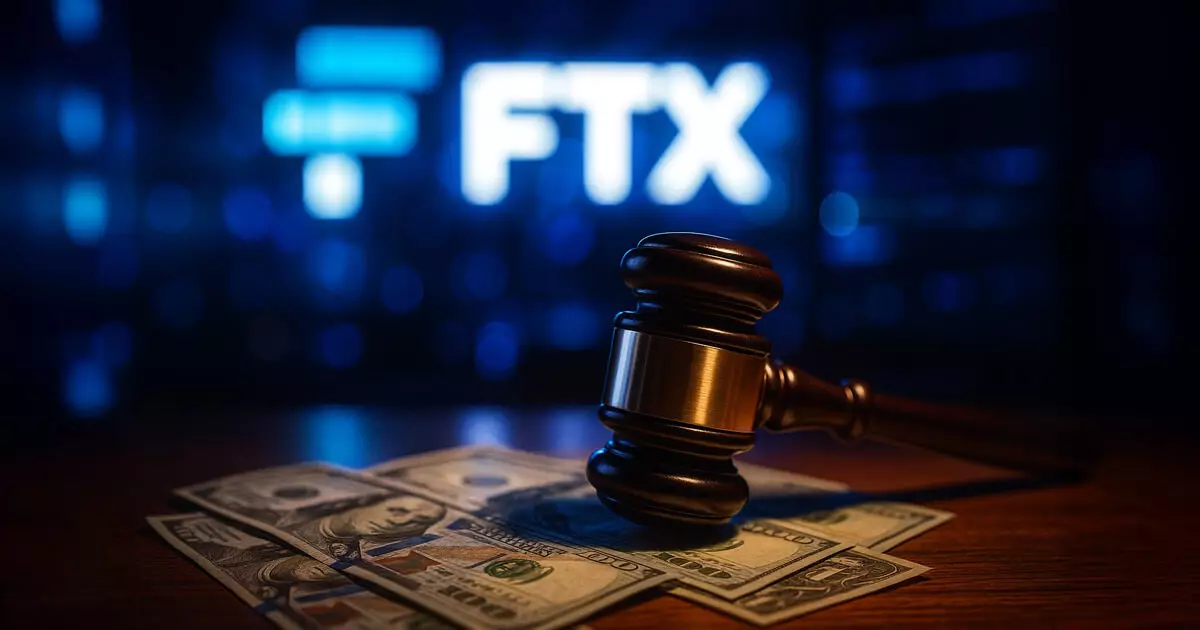The cryptocurrency landscape has often felt as volatile and unpredictable as the assets it revolves around. The collapse of FTX, one of the notable exchanges, added an intense layer of complexity to an already tumultuous industry. The ongoing legal skirmish with the now-defunct crypto hedge fund, Three Arrows Capital (3AC), is not just a simple bankruptcy case; it serves as a microcosm of the broader issues plaguing the crypto market. At the heart of this unfolding drama is a staggering $1.53 billion claim from 3AC that FTX’s bankruptcy lawyers label as “illogical.” The crux of the dispute hinges on a failure of risk management, questionable strategies, and a disastrous trade execution that has left a ripple effect throughout the crypto arena.
Understanding the Allegations
3AC’s claim against FTX revolves around margin trades executed on the exchange that ultimately led to their bankruptcy. While margin trading has the potential for enormous gains, it is a double-edged sword that can also culminate in disastrous losses, especially when fueled by excessive leverage. FTX’s stance is clear: the alleged losses suffered by 3AC were self-inflicted, resulting from poor decision-making and a lack of risk awareness rather than any wrongdoing on the part of the exchange itself.
In court documents, FTX asserts that 3AC’s assertiveness waned in June 2022 when the market began its downward spiral following the collapse of the TerraUSD stablecoin. FTX argues it was obliged to liquidate 3AC’s account—a move justified by the hedge fund’s failure to meet margin requirements. Accusations have surfaced that their response time was atrocious, as the firm allegedly ignored FTX’s communication for over six hours while hastily withdrawing significant amounts of Ethereum, which only exacerbated their precarious position. The legal team representing FTX refers to this withdrawal as a desperate act that further destabilized an already fragile situation.
Legal Maneuvers: A Game of Tug-of-War
As the legal tussle progresses, it is evident that both parties are employing aggressive legal strategies to assert their respective narratives. FTX’s lawyers vehemently argue that the hedge fund’s attempt to recoup a colossal sum is more a desperate measure to salvage its own failures than a genuine grievance against the exchange. Their position comprises expert testimonies that lend credibility to their assertion, including insights from financial consultants and lawyers who debunk 3AC’s claims with legal acumen.
On the flip side, 3AC appears to be banking on the notion that if they can perpetuate the belief that FTX acted irresponsibly, they stand a better chance of striking a deal—or at least gaining some leverage in this chaotic mess. It’s a deftly constructed defense, as several creditors of FTX wait in limbo for any signs of financial recovery. Any attempts by 3AC to deflect blame may affect the settlement landscape, centering attention away from their internal failures toward FTX as a scapegoat.
Repercussions for Creditors and Market Perception
The ramifications of this dispute reach beyond the two firms involved; they tumble down to the creditors and further complicate the public’s perception of the cryptocurrency sector. The claim from 3AC could set a dangerous precedent if it distracts attention from the legitimate financial concerns of FTX’s remaining creditors. In a market already riddled with skepticism and distrust, this legal fracas can heighten doubts about the integrity and sustainability of crypto markets altogether.
FTX’s lawyers manifested a strong sentiment when they argued that sacrificing the interests of legitimate creditors to accommodate 3AC’s claim would be utterly inequitable. The risk here runs deeper than a mere conflict of creditor priority; it raises essential questions about the accountability of all players in such a nascent industry. Are we dealing with a simple case of collateral damage in a speculative environment, or has the opacity of crypto trading allowed reckless behavior to flourish without necessary checks?
This clash prompts us to reflect on the ethical boundaries within high-stakes trading. Are companies equipped sufficiently to handle risk, or is the environment itself too permissive, allowing for reckless behavior to prosper in the guise of entrepreneurship? While the ideological dilemmas are many, one thing remains clear: the FTX-3AC saga underscores a need for vigilance, discipline, and thoughtful trading practices that extend beyond mere profit margins.
















Leave a Reply